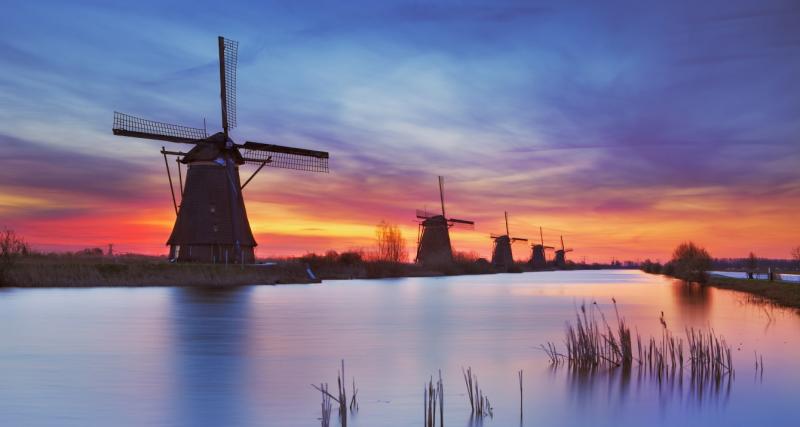
A Day Trip to Kinderdijk
By Jonathan Price
Around 25% of modern-day Netherlands lies below sea level and by travelling 16km south of Rotterdam visitors to Kinderdijk will discover how the Dutch reclaimed their land from the sea.
Home to the country’s largest known collection of medieval windmills, Kinderdijk (Child’s Dike) is critical to the country’s historical and geographical successes. The UNESCO World Heritage Site comprises a complex network of canals, reservoirs and traditional windmills, sitting in a small polder (low-lying piece of land) in The Alblasserwaard, the southern part of Holland’s gorgeous Groene Hart (Green Heart) region.
The site tells the story of how Dutch construction of hydraulic works for the drainage of land in favour of agriculture and settlement developed in the Middle Ages, and evolved into the diesel-powered pumping machines we see used today. At the height of Kinderdijk’s productivity, around 150 windmills stood tall amidst the village’s weteringen (13th Century canals). Today, the remaining 19 windmills date from between 1738-1760; one is open to the public and, during the second week of September, visitors have the opportunity to see the historic windmills alight at night, as part of the village’s Mills in Floodlight event.
Kinderdijk is also the home of the classic children’s tale, The Cat and The Cradle, making this magnificent area of natural beauty and man-made mystery the ideal attraction for young and old alike. Set amidst the great flood of 1421, the folk legend follows a cradle floating downriver, piloted by a cat. When an onlooker pulls the cradle in to rescue the cat, he looks inside and finds a sleeping baby, revealing the fearless feline as the true hero of the story.
Kinderdijk’s audio-visual museum and miles of canal-lined greenbelt will bring the site’s complex history and whimsical mythology to life. Rebus Varende Evenementen operates a three hour sailing trip from Rotterdam at 12pm daily, and tickets can be booked online. Alternatively, the site can be visited by waterbus or via Rotterdam’s reliable public transport.
Share this article:


















